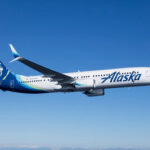Experiencing that muffled hearing or uncomfortable pressure in your ears after a flight? You’re likely dealing with airplane ear, a common condition caused by changes in air pressure. Fortunately, there are several simple and effective methods to help your ears pop and relieve that pressure. This guide will walk you through proven techniques to get your ears back to normal after flying, ensuring a more comfortable travel experience.
Understanding Airplane Ear and Why It Happens
Airplane ear, medically known as ear barotrauma or barotitis media, occurs when there’s a pressure difference between the air in your middle ear and the air pressure in the environment. Your eustachian tube, a small passage that connects your middle ear to the back of your throat, is responsible for equalizing this pressure.
During ascent and descent in an airplane, the air pressure changes rapidly. If your eustachian tube doesn’t open properly, the pressure in your middle ear can’t equalize, leading to discomfort, pain, and that plugged-up feeling. This is why knowing how to encourage your ears to pop is so valuable for frequent flyers and even those who only travel occasionally.
Proven Techniques to Pop Your Ears
Here are several techniques you can use to help your ears pop and relieve pressure after flying:
1. Yawn and Swallow Frequently
Yawning and swallowing are natural actions that activate the muscles responsible for opening your eustachian tubes. These movements can help to equalize the pressure in your middle ear.
- Yawning: A wide yawn is particularly effective. Try to yawn even if you don’t feel the urge.
- Swallowing: Swallowing also opens the eustachian tubes. You can stimulate swallowing by:
- Chewing gum: The act of chewing and swallowing saliva helps.
- Sucking on candy: Similar to gum, sucking on candy increases saliva production and swallowing.
- Drinking water or juice: Taking sips of a beverage can encourage swallowing.
2. Perform the Valsalva Maneuver
The Valsalva maneuver is a well-known technique for equalizing ear pressure. It involves gently forcing air into your eustachian tubes.
- How to do it:
- Pinch your nostrils closed with your fingers.
- Close your mouth.
- Gently try to blow air out of your nose while keeping your nostrils pinched and mouth closed.
- You should feel a slight pressure in your ears, and hopefully, they will pop.
- Caution: Perform the Valsalva maneuver gently. Forcing too hard can be harmful. Repeat a few times if necessary, especially during descent.
3. Use Nasal Sprays or Decongestants
If nasal congestion is contributing to your airplane ear, over-the-counter nasal sprays or decongestants can be helpful. Congestion can block the eustachian tubes, making it harder for them to equalize pressure.
- Nasal Sprays: Use a saline or decongestant nasal spray about 30 minutes to an hour before takeoff and landing. This can help to clear nasal passages and allow for better eustachian tube function. Avoid overuse of decongestant sprays, as prolonged use (over 3-4 days) can worsen congestion.
- Decongestant Pills: Oral decongestants can also be taken 30 minutes to an hour before flying. However, be cautious if you have heart conditions, high blood pressure, or are pregnant. Consult your doctor before using oral decongestants if you have any health concerns.
4. Consider Filtered Earplugs for Flying
Specially designed filtered earplugs can help to regulate the air pressure against your eardrum more gradually during flights. These earplugs work by slowly equalizing pressure in the ear canal.
- How they work: Filtered earplugs contain a porous filter that allows air pressure to change slowly, giving your eustachian tubes more time to adjust.
- Usage: Insert them before takeoff and keep them in during the flight, especially during descent. Even with earplugs, you may still need to use techniques like yawning and swallowing for optimal relief.
5. Stay Awake During Ascent and Descent
Being awake during takeoff and landing allows you to be proactive in managing ear pressure. You can consciously use the techniques mentioned above when you feel pressure building in your ears. If you are asleep, you might miss the cues to perform these pressure-equalizing actions.
6. Manage Allergies
If allergies contribute to nasal congestion, taking your allergy medication about an hour before your flight can help to keep your nasal passages clear and improve eustachian tube function.
When to Seek Medical Advice
While airplane ear is usually a temporary and self-manageable condition, there are situations where you should seek medical advice:
- Severe pain: If you experience intense ear pain that doesn’t subside with home remedies.
- Persistent symptoms: If your symptoms last for more than a few days after flying.
- Hearing loss or ringing in the ears (tinnitus): These could indicate a more serious issue.
- Frequent flyer with severe airplane ear: If you travel often and consistently experience severe airplane ear, discuss preventative options with your doctor. In some cases, for individuals with chronic issues or those undergoing hyperbaric oxygen therapy, doctors might recommend surgically placed ear tubes to help with pressure equalization and fluid drainage.
By understanding why airplane ear happens and employing these simple yet effective techniques, you can significantly reduce discomfort and ensure your ears pop naturally after flying, leading to a more enjoyable travel experience.
